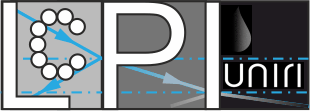Protonation of polyelectrolytes and surfaces determines a wealth of their properties, including colloidal stability of nanoparticles, the adsorption affinity for charged molecules, adhesion to other surfaces etc. This is due to the surface potential that originates from the electrostatic interaction among the surface- or polyelectrolyte-bound acidic or basic groups, which may become electrostatically charged in their hydrated state, depending on the activity of protons as the potential-determining ions (pH). At the solution side, a diffusion layer of counterions that experience a screened Coulombic attraction to the surface, balances the surface charge, while all the ions present in the diffused layer determine the extent of screening, usually expressed as the Debye length. The surface and the diffusion layer form the several nanometer-thick electrical double layer (EDL) at the surface/solution interface, as one of the most important, yet experimentally and theoretically most challenging features in the entire colloid and surface science.
At LCPI, we are employing several techniques for studying the extent of charge build-up and EDL charge-potential characteristics at surfaces and polyelectrolytes. In the first place, we dispose of a home-built high-precision titrator for automated acid-base titrations at strictly regulated ionic conditions in the titrated solution (ionic strength). We also dispose of a zetasizer for the measurements of hydrodynamic radius and electrophoretic mobility (in many cases directly related to the zeta-potentitial), and a drop shape analysis camera for determining the Van der Waals interactions of surface sites, by using the sessile drops of liquids. In combination with other techniques in the lab, this offers a versatile platform for charge-property related studies of colloidal particles and polyelectrolytes.
Relevant papers (chronologically):
B. Katana, D. Čakara*, Proton Binding of Halloysite Nanotubes at Varied Ionic Strength: A Potentiometric Titration and Electrophoretic Mobility Study, Colloids and Interfaces 2025, 9(6), 79. doi:10.3390/colloids9060079
D. Klepac*, M. R. Tavares, M. Vragović, R. Ogrizović, S. Valić, S. Kereïche, S. K. Filippov, T. Etrych, D. Čakara*, P. Chytil*, HPMA-based nitroxide radical containing nanoparticles with controlled radical release: Detailed physico-chemical characterization, European Polymer Journal 2025, 225, 113727, doi:10.1016/j.eurpolymj.2025.113727
M. Borkovec, D. Čakara, G. J. M. Koper, Resolution of microscopic protonation enthalpies of polyprotic molecules by means of cluster expansions, The Journal of Physical Chemistry B 2012, 116, 4300, doi:10.1021/jp301164f
C. S. P. Zarth, L. F. Zemljič, D. Čakara, M. Bračič, A. Pfeifer, K. Stana-Kleinschek, T. Heinze, Charging Behavior and Stability of the Novel Amino Group Containing Cellulose Ester Cellulose‐4‐[N‐methylamino]butyrate Hydrochloride, Macromolecular Chemistry and Physics 2012, 213, 1669, doi:10.1002/macp.201200057
L. F. Zemljič, D. Čakara, N. Michaelis, T. Heinze, K. S. Kleinschek, Protonation behavior of 6-deoxy-6-(2-aminoethyl) amino cellulose: a potentiometric titration study, Cellulose 2011, 18, 33, doi:10.1007/s10570-010-9467-x
D. Čakara, L. Fras, M. Bračič, K. S. Kleinschek, Protonation behavior of cotton fabric with irreversibly adsorbed chitosan: a potentiometric titration study, Carbohydrate polymers 2009, 78, 36, doi: 10.1016/j.carbpol.2009.04.011
D. Čakara, M. Kobayashi, M. Skarba, M. Borkovec, Protonation of Silica Particles in the Presence of a Strong Cationic Polyelectrolyte, Colloids and Surfaces A: Physicochemical and Engineering Aspects 2009, 339, 20, doi:10.1016/j.colsurfa.2009.01.011
D. Čakara, M. Borkovec, Microscopic protonation mechanism of branched polyamines: poly (amidoamine) versus poly (propyleneimine) dendrimers, Croatica chemica acta 2007, 80, 421,
D. Cakara, C. Chassagne, C. Gehin-Delval, M. Borkovec, Protonation of carboxyl latex particles in the presence of a strong cationic polyelectrolyte, Colloids and Surfaces A: Physicochemical and Engineering Aspects 2007, 294, 174, doi:10.1016/j.colsurfa.2006.08.006
M. Kobayashi, M. Skarba, P. Galletto, D. Cakara, M. Borkovec, Effects of heat treatment on the aggregation and charging of Stöber-type silica, Journal of colloid and interface science 2005, 292, 139, doi:/10.1016/j.jcis.2005.05.093
D. Cakara, J. Kleimann, M. Borkovec, Microscopic protonation equilibria of poly (amidoamine) dendrimers from macroscopic titrations, Macromolecules 2003, 36, 4201, doi:10.1021/ma0300241
N. Kallay, D. Cakara, Reversible Charging of the Ice–Water Interface: I. Measurement of the Surface Potential, Journal of colloid and interface science 2000, 232, 81, doi:10.1006/jcis.2000.7193

